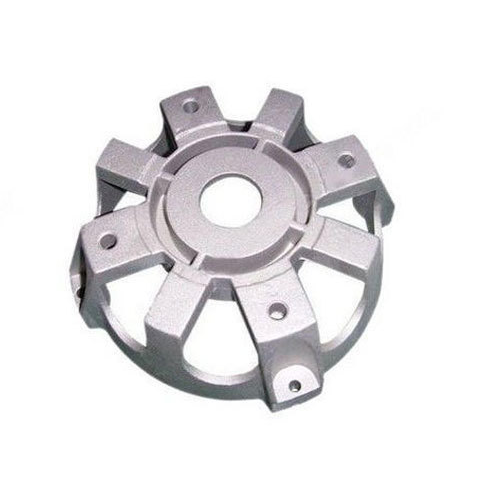Quality Of Electrodeposition On Zinc Die Castings | Diecasting-Mould
Zinc alloy has low melting point and is easy to die cast into various parts with complex shape and high precision. The zinc alloy die castings processed by electroplating and its decorative, corrosion resistance and low cost are widely used in household appliances, hardware products and imitation crafts. Due to the characteristics of zinc die castings, some problems existing in die casting and electroplating processing will directly affect the electroplating quality. This article discusses some problems of electroplating quality control of zinc alloy die castings.

Pay Attention To Zinc Alloy Material And Die Casting Technology
Die cast zinc alloys use more than 95% zinc with a small amount of aluminum, copper, magnesium, and contain impurities such as iron, lead, cadmium, and tin. However, when the trace impurities exceed the allowable content, the casting will produce inclusions, pores, hot and cold cracks, etc., which will reduce the mechanical properties of the die casting and cause the electroplating layer to bubble. Therefore, it is necessary to conduct laboratory analysis on zinc alloy composition and harmful impurities, and use it after confirming that it is qualified.
Improper die casting technology can cause defects in the surface layer, such as cold lines, subcutaneous blisters, pores or cracks. These defects are the main factors that directly cause bubbles on zinc alloy die casting after electroplating. Due to the limitations of mold design and die-casting process, coupled with the influence of machine and operation factors, die-casting parts are more or less defective. Corresponding acceptance standards should be formulated according to their impact on electroplating quality and product usage requirements , Strict inspection.
Pay Attention To Pretreatment Processes
Proper pretreatment is a key step in the electroplating process of zinc alloy die castings, and it is an important process to ensure the adhesion of the coating.
1. Grinding and polishing
The texture of zinc die castings is flexible, and the surface layer is about 01 mm thick dense layer, and under the surface is the porous structure of sulphur pine. Special attention should be paid to this structural feature of zinc die castings during grinding and polishing. Polishing is the leveling of rough and repairable defect surfaces. The defects such as flash, blistering and cracks on the surface of zinc die castings can be reduced or eliminated by polishing. Die casting parts with better surface quality can be directly polished.
2. Degreasing
In order to clean the grease and oil stains on the surface and pores of zinc die castings, organic solvents can be used to degreasing. Trichloroethylene solvent can be used for ultrasonic cleaning with heating and condensation equipment. But the dirty solvent must be replaced in time to prevent stains and affect the quality of the electric key. For parts with grooves and screw positions, pay attention to check whether the polishing paste embedded in these parts is cleaned, and the key layer will oxidize and change color when it flows out during rabbit plating. Chemical degreasing and electrolytic degreasing should be carried out at low temperature and low alkalinity as far as possible. Degreasing solution concentration, temperature and degreasing time should be matched appropriately to prevent over-corrosion and the formation of alkaline film which may cause coating blistering.
Choose Reasonable Electroplating Process
The electroplating process of zinc alloy die casting is essentially different from that on steel and other metals. The key point of selecting the process is pre coating, which will not cause chemical reaction and replacement of zinc alloy in the plating bath, but also ensure the adhesion between the pre coating and the substrate, and between the pre coating and the intermediate coating
1. Pre plating process
At present, cyaniding pre plating process is the most widely used. However, it must be noted that there are some defects such as cold lines and micro holes on the surface of zinc castings, and the hydrogen produced by the cathodic hydrogen evolution reaction of copper cyanide plating is easy to stay in these defects, so it is easy to cause post transition blistering. If the zinc castings need to be sealed with varnish after plating, the foaming of these zinc castings will be more serious.
2. Intermediate plating process
The process of intermediate plating includes acid bright copper plating, periodic reversing copper chloride plating and other thickening processes
Conclusion
The electroplating quality of zinc alloy die castings is closely related to zinc alloy materials, die casting technology, pretreatment and electroplating process. The key to control the electroplating quality of zinc castings is the grinding and polishing operation in pretreatment and the pre plating process in electroplating. It has been proved by practice that strictly operating according to the process standard and strengthening the operator’s quality awareness and work quality are the powerful guarantee to control the quality and improve the qualified rate of zinc casting products.

